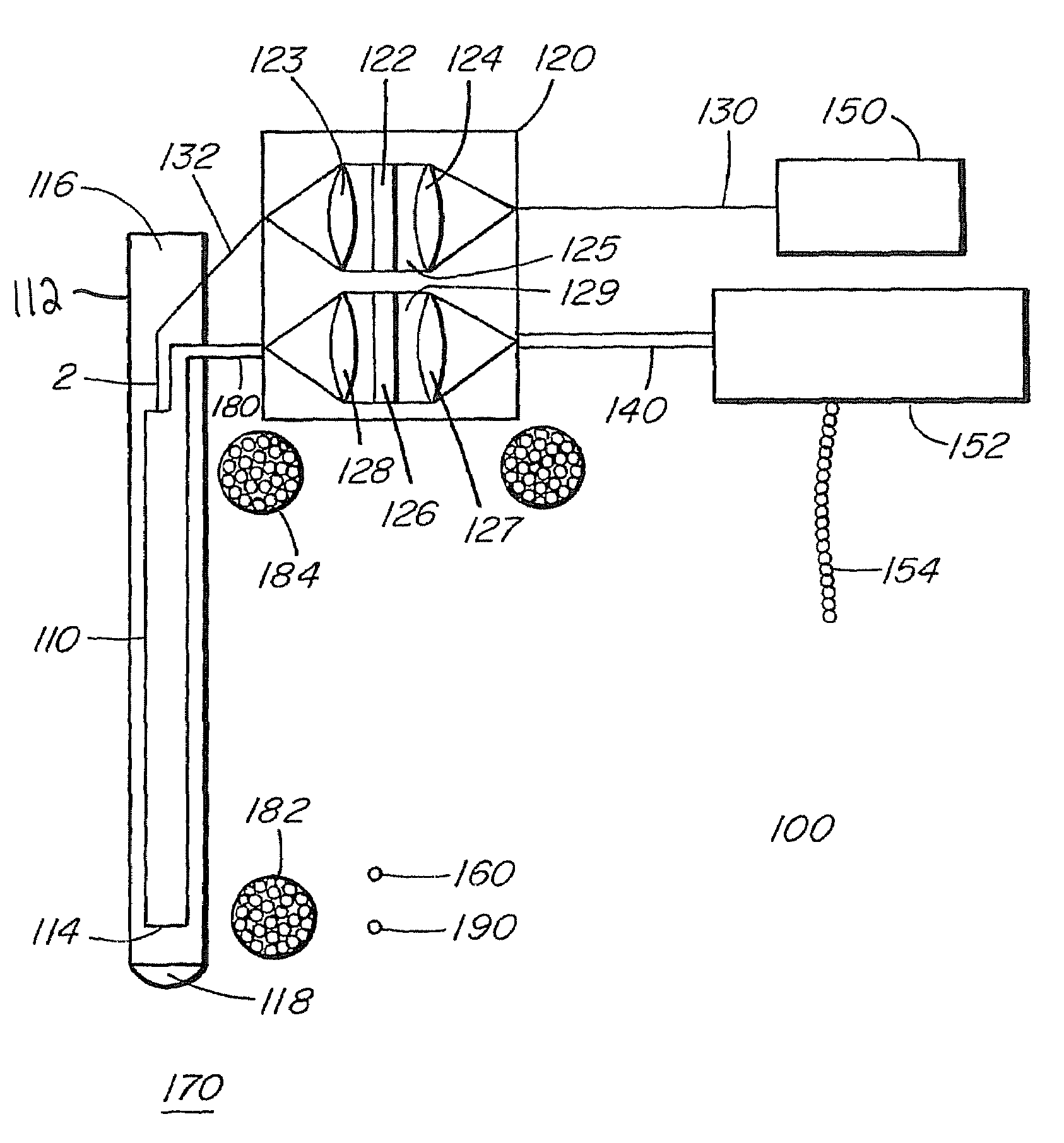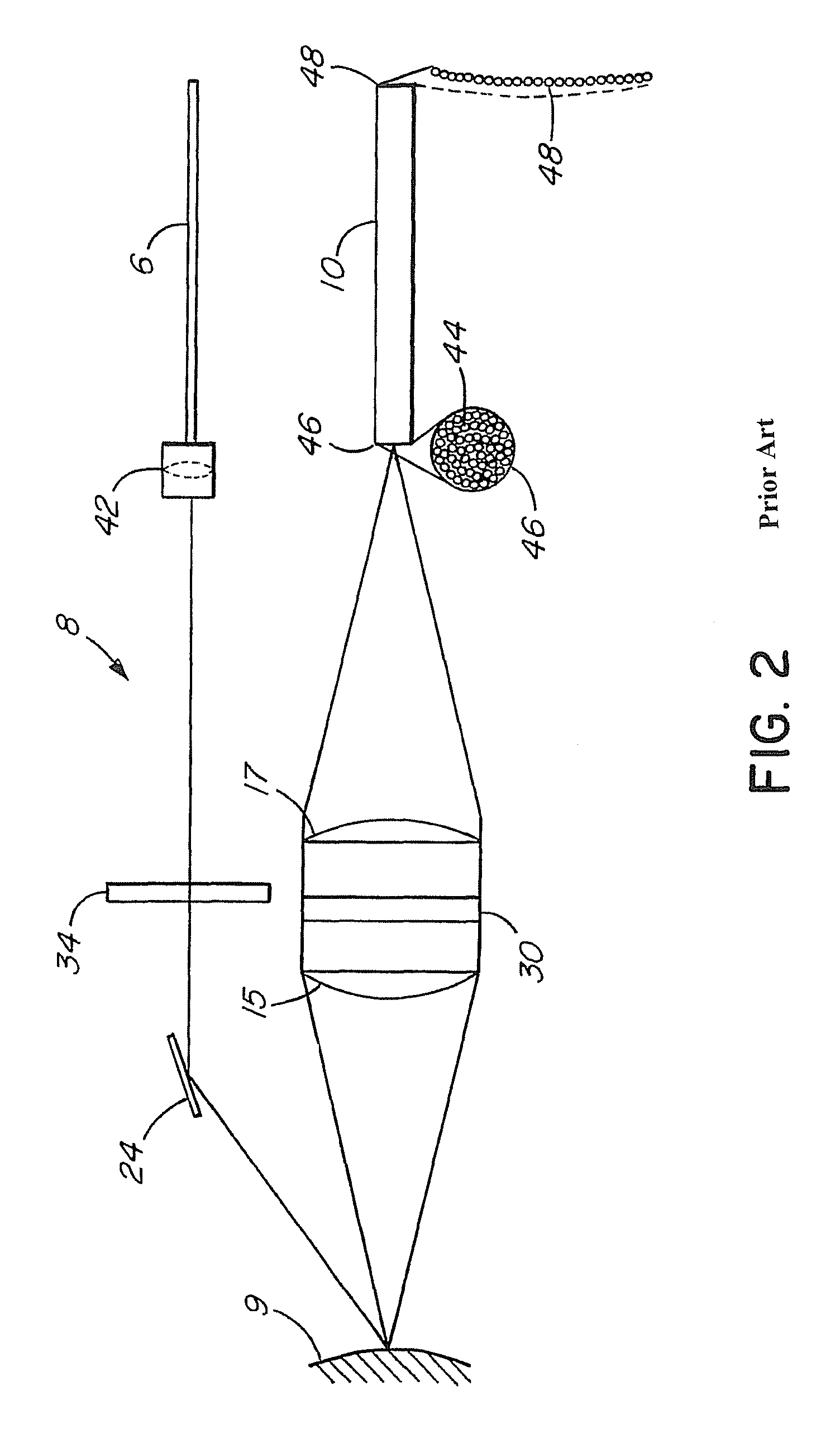IN Vivo raman endoscopic probe
a raman endoscopic and probe technology, applied in the field of in vivo raman endoscopic probes, can solve the problems of insufficient changes, most lost years of life, and general asymptomatic lung cancer, and achieve the effect of short integration time and superior s/n ratio
- Summary
- Abstract
- Description
- Claims
- Application Information
AI Technical Summary
Benefits of technology
Problems solved by technology
Method used
Image
Examples
Embodiment Construction
[0033]We have successfully built a rapid Raman spectroscopy system, which can obtain a Raman spectrum from in vivo skin in less than one second. This system is described and claimed in U.S. Pat. No. 6,486,948, the disclosure of which is incorporated by reference. FIG. 1 shows the block diagram of the system. It consists of an external cavity-stabilized diode laser 4 (785 nm, 300 mW; Model 8530, SDL), a transmissive imaging spectrograph 2 (HoloSpec-f / 2.2-NIR, Kaiser), a NIR-optimized, back-illuminated, deep-depletion, CCD detector 20 (LN / CCD-1024EHRB, Princeton Instruments), and a specially-designed Raman probe 8. The laser 4 is coupled to the Raman probe 8 via a 200-μm core-diameter fiber 6. The CCD 20 consists of 1024×256 pixels (27 μm×27 μm) and allowed vertical binning for improved detection sensitivity. The whole system was packed onto a movable cart for outpatient clinical data acquisition.
[0034]This Raman probe 8 was designed to maximize the collection of tissue Raman signals ...
PUM
| Property | Measurement | Unit |
|---|---|---|
| cut-off wavelength | aaaaa | aaaaa |
| optical density | aaaaa | aaaaa |
| diameter | aaaaa | aaaaa |
Abstract
Description
Claims
Application Information
 Login to View More
Login to View More - R&D
- Intellectual Property
- Life Sciences
- Materials
- Tech Scout
- Unparalleled Data Quality
- Higher Quality Content
- 60% Fewer Hallucinations
Browse by: Latest US Patents, China's latest patents, Technical Efficacy Thesaurus, Application Domain, Technology Topic, Popular Technical Reports.
© 2025 PatSnap. All rights reserved.Legal|Privacy policy|Modern Slavery Act Transparency Statement|Sitemap|About US| Contact US: help@patsnap.com



